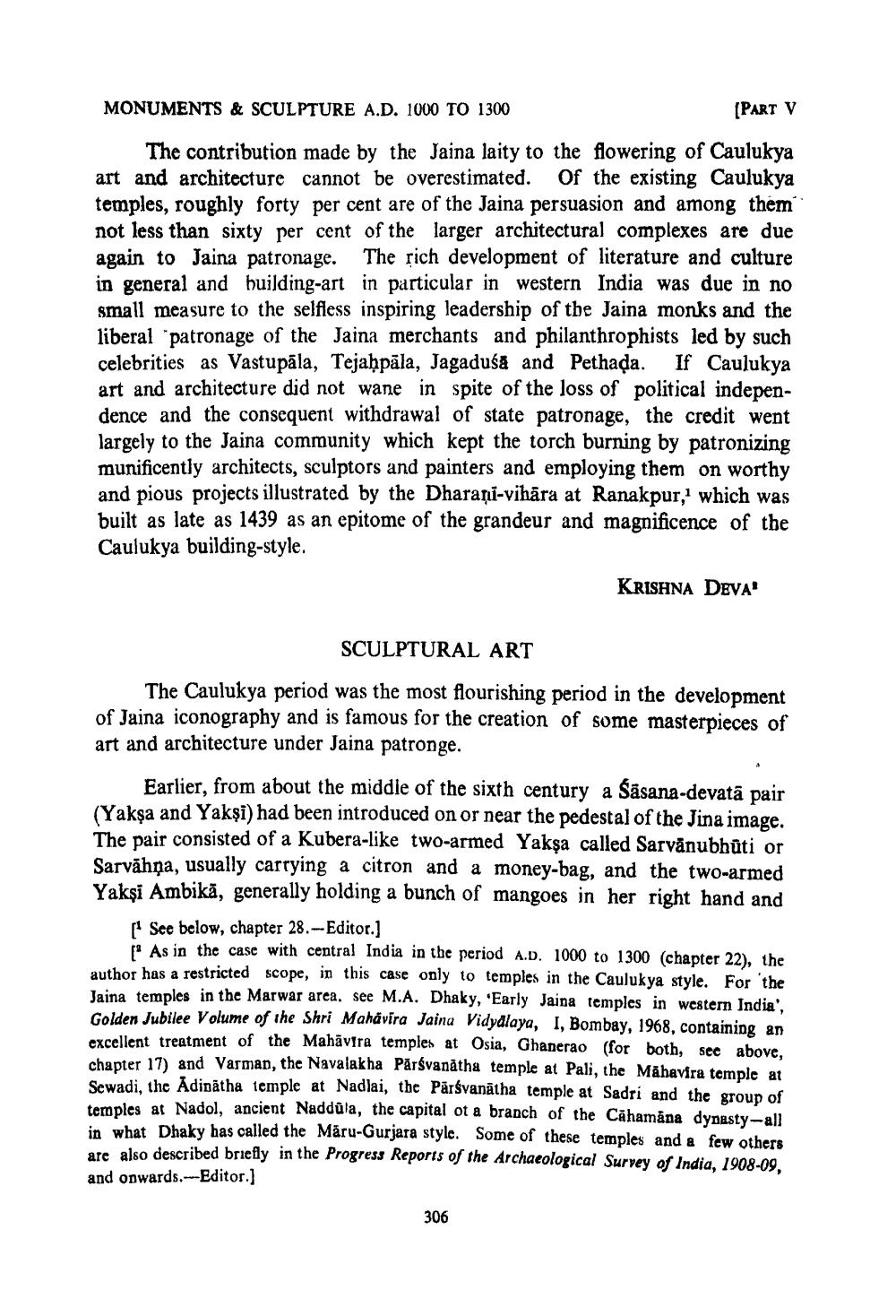________________
MONUMENTS & SCULPTURE A.D. 1000 TO 1300
(PART V
The contribution made by the Jaina laity to the flowering of Caulukya
and architecture cannot be overestimated. Of the existing Caulukya temples, roughly forty per cent are of the Jaina persuasion and among them not less than sixty per cent of the larger architectural complexes are due again to Jaina patronage. The rich development of literature and culture in general and huilding-art in particular in western India was due in no small measure to the selfless inspiring leadership of the Jaina monks and the liberal "patronage of the Jaina merchants and philanthrophists led by such celebrities as Vastupāla, Tejahpāla, Jagaduśă and Pethada. If Caulukya art and architecture did not wane in spite of the loss of political independence and the consequent withdrawal of state patronage, the credit went largely to the Jaina community which kept the torch burning by patronizing munificently architects, sculptors and painters and employing them on worthy and pious projects illustrated by the Dharani-vihāra at Ranakpur, which was built as late as 1439 as an epitome of the grandeur and magnificence of the Caulukya building-style.
KRISHNA DEVA"
SCULPTURAL ART
The Caulukya period was the most flourishing period in the development of Jaina iconography and is famous for the creation of some masterpieces of art and architecture under Jaina patronge.
Earlier, from about the middle of the sixth century a Sãsana-devatā pair (Yaksa and Yakşi) had been introduced on or near the pedestal of the Jina image. The pair consisted of a Kubera-like two-armed Yakşa called Sarvānubhüti or Sarvāhna, usually carrying a citron and a money-bag, and the two-armed Yaksi Ambikā, generally holding a bunch of mangoes in her right hand and
See below, chapter 28.-Editor.)
As in the case with central India in the period A.D. 1000 to 1300 (chapter 22), the author has a restricted scope, in this case only to temples in the Caulukya style. For the Jaina temples in the Marwar area. See M.A. Dhaky, 'Early Jaina temples in western India'. Golden Jubilee Volume of the Shri Mahavira Jaina Vidydlaya, I, Bombay, 1968, containing an excellent treatment of the Mahāvira temples at Osia, Ghanerao (for both, sec above, chapter 17) and Varman, the Navalakha Parsvanātha temple at Pali, the Māhavira temple at Sewadi, the Adinātha temple at Nadlai, the Pārsvanātha temple at Sadri and the group of temples at Nadol, ancient Naddula, the capital ot a branch of the Cāhamăna dynasty-all in what Dhaky has called the Māru-Gurjara style. Some of these temples and a few others are also described briefly in the Progress Reports of the Archaeological Survey of India, 1908-09. and onwards.-Editor.)
306




